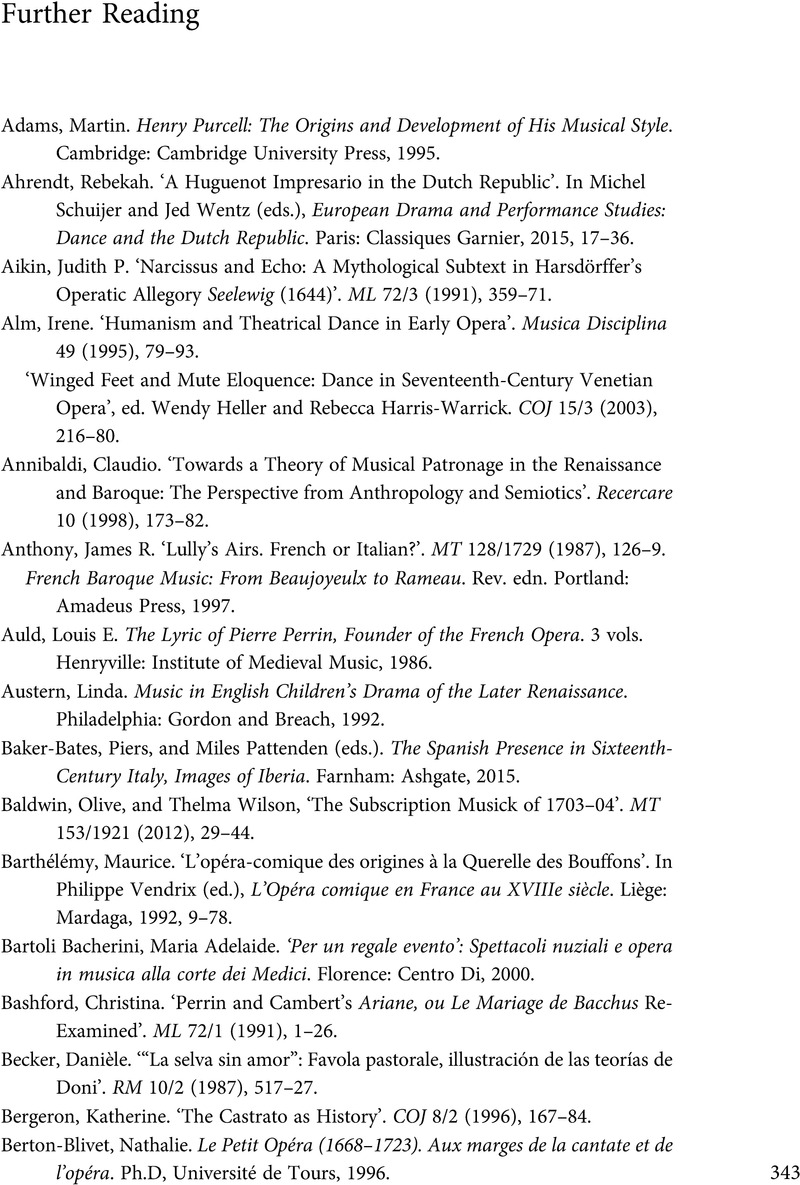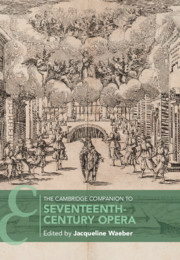Book contents
- The Cambridge Companion to Seventeenth-Century Opera
- Cambridge Companions to Music
- The Cambridge Companion to Seventeenth-Century Opera
- Copyright page
- Contents
- Music Examples
- Figures
- Tables
- Contributors
- Preface
- Chronology
- Abbreviations
- Part I The Italian Foundations
- Part II Society, Institutions, and Production
- Part III National Traditions (outside Italy)
- Further Reading
- Index
- References
Further Reading
Published online by Cambridge University Press: 08 December 2022
- The Cambridge Companion to Seventeenth-Century Opera
- Cambridge Companions to Music
- The Cambridge Companion to Seventeenth-Century Opera
- Copyright page
- Contents
- Music Examples
- Figures
- Tables
- Contributors
- Preface
- Chronology
- Abbreviations
- Part I The Italian Foundations
- Part II Society, Institutions, and Production
- Part III National Traditions (outside Italy)
- Further Reading
- Index
- References
Summary

- Type
- Chapter
- Information
- The Cambridge Companion to Seventeenth-Century Opera , pp. 343 - 370Publisher: Cambridge University PressPrint publication year: 2022

